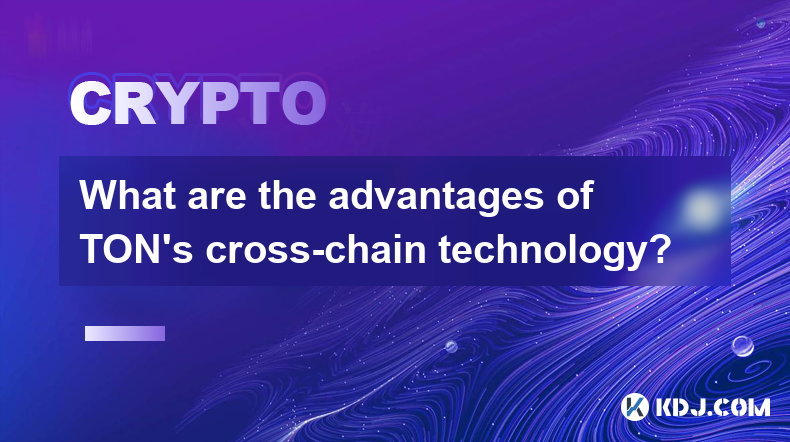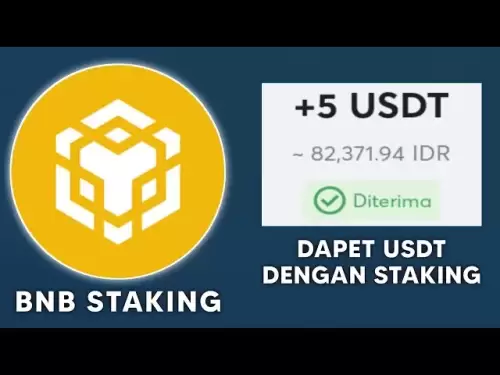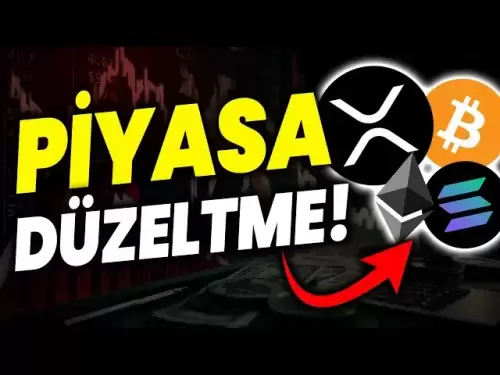-
 Bitcoin
Bitcoin $102,936.6333
3.84% -
 Ethereum
Ethereum $2,303.2860
5.42% -
 Tether USDt
Tether USDt $1.0008
0.05% -
 XRP
XRP $2.0592
5.18% -
 BNB
BNB $630.3035
4.07% -
 Solana
Solana $139.0485
7.91% -
 USDC
USDC $1.0000
0.01% -
 TRON
TRON $0.2722
3.17% -
 Dogecoin
Dogecoin $0.1572
6.30% -
 Cardano
Cardano $0.5543
5.37% -
 Hyperliquid
Hyperliquid $37.0789
8.94% -
 Bitcoin Cash
Bitcoin Cash $454.8827
2.38% -
 Sui
Sui $2.6088
10.94% -
 UNUS SED LEO
UNUS SED LEO $9.0751
0.81% -
 Chainlink
Chainlink $12.1078
6.95% -
 Stellar
Stellar $0.2351
5.76% -
 Avalanche
Avalanche $17.1771
7.35% -
 Toncoin
Toncoin $2.8438
5.50% -
 Shiba Inu
Shiba Inu $0.0...01112
7.74% -
 Litecoin
Litecoin $82.9385
5.91% -
 Hedera
Hedera $0.1409
8.82% -
 Ethena USDe
Ethena USDe $1.0006
0.01% -
 Monero
Monero $301.2470
1.77% -
 Dai
Dai $1.0001
0.01% -
 Polkadot
Polkadot $3.2751
3.88% -
 Bitget Token
Bitget Token $4.0623
2.00% -
 Uniswap
Uniswap $6.5652
8.27% -
 Pepe
Pepe $0.0...09287
7.77% -
 Pi
Pi $0.5146
6.32% -
 Aave
Aave $242.0173
11.35%
What are the advantages of TON's cross-chain technology?
TON's cross-chain technology enables fast, low-fee, secure asset transfers between blockchains, fostering interoperability and facilitating new dApps and financial instruments.
Mar 22, 2025 at 11:50 am

Key Points:
- TON's cross-chain technology facilitates seamless asset transfer between different blockchains.
- It enhances interoperability, allowing communication and collaboration between diverse networks.
- TON leverages its unique architecture to achieve high transaction speeds and low fees in cross-chain operations.
- Security is a core feature, utilizing robust cryptographic methods to protect transferred assets.
- The technology potentially opens avenues for new decentralized applications (dApps) and financial instruments.
What are the advantages of TON's cross-chain technology?
The Telegram Open Network (TON) boasts a sophisticated cross-chain technology offering several key advantages within the cryptocurrency ecosystem. Unlike many blockchain networks that operate in isolation, TON aims to bridge the gap between different blockchains, fostering interoperability and expanding possibilities for users and developers.
One significant advantage is the seamless transfer of assets. TON's technology allows for the smooth movement of cryptocurrencies and tokens between various blockchain networks. This eliminates the complexities and limitations often associated with transferring assets across disparate systems. This ease of transfer can greatly enhance user experience and efficiency.
Interoperability is another cornerstone of TON's cross-chain capabilities. By enabling communication and collaboration between different blockchain networks, TON facilitates the creation of a more interconnected and collaborative crypto ecosystem. This opens doors for innovative decentralized applications (dApps) and services that can leverage the strengths of multiple blockchains simultaneously.
TON's architecture plays a crucial role in achieving high transaction speeds and low fees during cross-chain transfers. This is a critical factor, as high fees and slow transaction times can hinder the adoption and usability of cross-chain solutions. TON’s design aims to mitigate these issues, making cross-chain interactions more efficient and accessible.
Security is paramount in any cryptocurrency system, and TON's cross-chain technology incorporates robust cryptographic methods to safeguard transferred assets. The security protocols are designed to prevent unauthorized access and manipulation, ensuring the integrity and trustworthiness of cross-chain transactions. This is vital to maintaining user confidence and the overall security of the ecosystem.
The potential for new dApps and financial instruments is significant. TON's cross-chain capabilities unlock new possibilities for developers to build innovative applications that leverage the unique features of multiple blockchains. This could lead to the creation of novel decentralized finance (DeFi) products, improved supply chain management systems, and other applications that benefit from the combined strengths of different networks.
The scalability of TON's cross-chain infrastructure is also noteworthy. The system is designed to handle a large volume of transactions without compromising speed or security. This scalability is crucial for accommodating the growing demand for cross-chain interactions as the cryptocurrency ecosystem expands.
How does TON's cross-chain technology compare to other solutions?
Comparing TON's cross-chain technology to others requires a detailed analysis of specific functionalities and performance metrics. While many projects offer cross-chain solutions, TON aims to differentiate itself through its speed, scalability, and security features. The specific advantages will depend on the particular competitor being examined and the criteria used for comparison.
What are the potential limitations of TON's cross-chain technology?
While promising, TON's cross-chain technology may face certain limitations. The complexity of integrating with diverse blockchain networks can present challenges. Maintaining compatibility and ensuring seamless operation across different systems requires ongoing development and maintenance. Furthermore, the security of the system is constantly subject to evolving threats, demanding continuous improvement of its security protocols.
What are the future prospects of TON's cross-chain technology?
The future of TON's cross-chain technology looks promising. As the cryptocurrency space continues to evolve, the need for interoperability and seamless asset transfers will only increase. TON's technology, with its focus on speed, security, and scalability, is well-positioned to play a significant role in shaping the future of cross-chain interactions. The success, however, will depend on factors like community adoption, regulatory developments, and the continuous improvement and adaptation of the technology itself.
How does TON's cross-chain technology ensure security?
TON's cross-chain security relies on a multi-layered approach. This includes robust cryptographic protocols for secure communication and transaction validation, as well as mechanisms to prevent replay attacks and double-spending. Regular security audits and updates are crucial to maintaining a high level of security. The specific mechanisms employed are often complex and are subject to ongoing refinement and improvements.
What types of assets can be transferred using TON's cross-chain technology?
Theoretically, TON's cross-chain technology could facilitate the transfer of a wide range of assets. This includes various cryptocurrencies, tokens representing fractional ownership of assets, and even non-fungible tokens (NFTs). However, the practical implementation would depend on the specific functionalities implemented and the compatibility of different blockchain networks.
What is the role of smart contracts in TON's cross-chain technology?
Smart contracts play a crucial role in automating and securing cross-chain transactions within the TON ecosystem. They can facilitate the automatic execution of agreements and the transfer of assets between different blockchains based on predefined conditions. The development and implementation of robust and secure smart contracts are vital for the successful operation of TON's cross-chain functionality.
How does TON's cross-chain technology handle transaction fees?
Transaction fees in TON's cross-chain operations are designed to be relatively low compared to some other solutions. However, the exact fees may vary based on factors such as network congestion and the size of the transaction. The goal is to make cross-chain transfers affordable and accessible to a broad range of users. The fee structure and mechanisms are subject to adjustments and optimizations as the network develops.
Disclaimer:info@kdj.com
The information provided is not trading advice. kdj.com does not assume any responsibility for any investments made based on the information provided in this article. Cryptocurrencies are highly volatile and it is highly recommended that you invest with caution after thorough research!
If you believe that the content used on this website infringes your copyright, please contact us immediately (info@kdj.com) and we will delete it promptly.
- Crypto Penny Coins: Hunting for Monster Gains in 2025
- 2025-06-24 02:45:12
- Ethereum Whale Dips Into Crashing ETH: Smart Move?
- 2025-06-24 02:25:12
- Shiba Inu vs. Rival Tokens: Navigating the Cryptocurrency Craze in NYC
- 2025-06-24 03:10:22
- Stablecoin Scramble: Market Structure and Bill Passage in the Crypto Wild West
- 2025-06-24 02:45:12
- Circle Stock Soars: Surpassing USDC Market Cap After GENIUS Act Boost
- 2025-06-24 03:10:22
- Pepe Coin's Open Interest Hints at Potential Rally: A Trader's Guide
- 2025-06-24 02:50:12
Related knowledge

How to customize USDT TRC20 mining fees? Flexible adjustment tutorial
Jun 13,2025 at 01:42am
Understanding USDT TRC20 Mining FeesMining fees on the TRON (TRC20) network are essential for processing transactions. Unlike Bitcoin or Ethereum, where miners directly validate transactions, TRON uses a delegated proof-of-stake (DPoS) mechanism. However, users still need to pay bandwidth and energy fees, which are collectively referred to as 'mining fe...

USDT TRC20 transaction is stuck? Solution summary
Jun 14,2025 at 11:15pm
Understanding USDT TRC20 TransactionsWhen users mention that a USDT TRC20 transaction is stuck, they typically refer to a situation where the transfer of Tether (USDT) on the TRON blockchain has not been confirmed for an extended period. This issue may arise due to various reasons such as network congestion, insufficient transaction fees, or wallet-rela...

How to cancel USDT TRC20 unconfirmed transactions? Operation guide
Jun 13,2025 at 11:01pm
Understanding USDT TRC20 Unconfirmed TransactionsWhen dealing with USDT TRC20 transactions, it’s crucial to understand what an unconfirmed transaction means. An unconfirmed transaction is one that has been broadcasted to the blockchain network but hasn’t yet been included in a block. This typically occurs due to low transaction fees or network congestio...

How to check USDT TRC20 balance? Introduction to multiple query methods
Jun 21,2025 at 02:42am
Understanding USDT TRC20 and Its ImportanceUSDT (Tether) is one of the most widely used stablecoins in the cryptocurrency market. It exists on multiple blockchain networks, including TRC20, which operates on the Tron (TRX) network. Checking your USDT TRC20 balance accurately is crucial for users who hold or transact with this asset. Whether you're sendi...

What to do if USDT TRC20 transfers are congested? Speed up trading skills
Jun 13,2025 at 09:56am
Understanding USDT TRC20 Transfer CongestionWhen transferring USDT TRC20, users may occasionally experience delays or congestion. This typically occurs due to network overload on the TRON blockchain, which hosts the TRC20 version of Tether. Unlike the ERC20 variant (which runs on Ethereum), TRC20 transactions are generally faster and cheaper, but during...

The relationship between USDT TRC20 and TRON chain: technical background analysis
Jun 12,2025 at 01:28pm
What is USDT TRC20?USDT TRC20 refers to the Tether (USDT) token issued on the TRON blockchain using the TRC-20 standard. Unlike the more commonly known ERC-20 version of USDT (which runs on Ethereum), the TRC-20 variant leverages the TRON network's infrastructure for faster and cheaper transactions. The emergence of this version came as part of Tether’s...

How to customize USDT TRC20 mining fees? Flexible adjustment tutorial
Jun 13,2025 at 01:42am
Understanding USDT TRC20 Mining FeesMining fees on the TRON (TRC20) network are essential for processing transactions. Unlike Bitcoin or Ethereum, where miners directly validate transactions, TRON uses a delegated proof-of-stake (DPoS) mechanism. However, users still need to pay bandwidth and energy fees, which are collectively referred to as 'mining fe...

USDT TRC20 transaction is stuck? Solution summary
Jun 14,2025 at 11:15pm
Understanding USDT TRC20 TransactionsWhen users mention that a USDT TRC20 transaction is stuck, they typically refer to a situation where the transfer of Tether (USDT) on the TRON blockchain has not been confirmed for an extended period. This issue may arise due to various reasons such as network congestion, insufficient transaction fees, or wallet-rela...

How to cancel USDT TRC20 unconfirmed transactions? Operation guide
Jun 13,2025 at 11:01pm
Understanding USDT TRC20 Unconfirmed TransactionsWhen dealing with USDT TRC20 transactions, it’s crucial to understand what an unconfirmed transaction means. An unconfirmed transaction is one that has been broadcasted to the blockchain network but hasn’t yet been included in a block. This typically occurs due to low transaction fees or network congestio...

How to check USDT TRC20 balance? Introduction to multiple query methods
Jun 21,2025 at 02:42am
Understanding USDT TRC20 and Its ImportanceUSDT (Tether) is one of the most widely used stablecoins in the cryptocurrency market. It exists on multiple blockchain networks, including TRC20, which operates on the Tron (TRX) network. Checking your USDT TRC20 balance accurately is crucial for users who hold or transact with this asset. Whether you're sendi...

What to do if USDT TRC20 transfers are congested? Speed up trading skills
Jun 13,2025 at 09:56am
Understanding USDT TRC20 Transfer CongestionWhen transferring USDT TRC20, users may occasionally experience delays or congestion. This typically occurs due to network overload on the TRON blockchain, which hosts the TRC20 version of Tether. Unlike the ERC20 variant (which runs on Ethereum), TRC20 transactions are generally faster and cheaper, but during...

The relationship between USDT TRC20 and TRON chain: technical background analysis
Jun 12,2025 at 01:28pm
What is USDT TRC20?USDT TRC20 refers to the Tether (USDT) token issued on the TRON blockchain using the TRC-20 standard. Unlike the more commonly known ERC-20 version of USDT (which runs on Ethereum), the TRC-20 variant leverages the TRON network's infrastructure for faster and cheaper transactions. The emergence of this version came as part of Tether’s...
See all articles
























































































